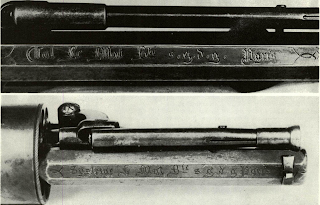Murdaugh, who was stationed in Paris, varied the
Paris, June 23,Murdaugh’s condemnation sealed the fate of LeMat’sSir: In obedience to your order of the 13th instant, I have inspected the pistols made by C. Girard & Co. under contract with the Navy Department and have the honor to report that from the general bad character of the workmanship I have declined to receive those which they had on hand ready for delivery. As a specimen of the workmanship, I would state that of the first seven examined, six had defects, as follows, viz: In one the grape-shot barrel went off at the fourth or fifth fire of the revolving cylinder from a defect in the hammer. On the next the cylinder would not revolve from defect in spring of revolving apparatus. In the next the hammer at times would miss striking the nipple altogether, seriously damaging it. In the other three the fixed and revolving barrels were not true with one another when in position for firing, and in one of these the hammer did not strike fair.
Of all those examined, none appeared to be reliable, andalmost all of them had serious defects, such as those enumerated. In all the metal of which the faces of the hammers were made was too soft.
Very respectfully, your obedient servantW. H. Murdaugh
Flag Officer S. Barron,
Paris


Comments
Post a Comment